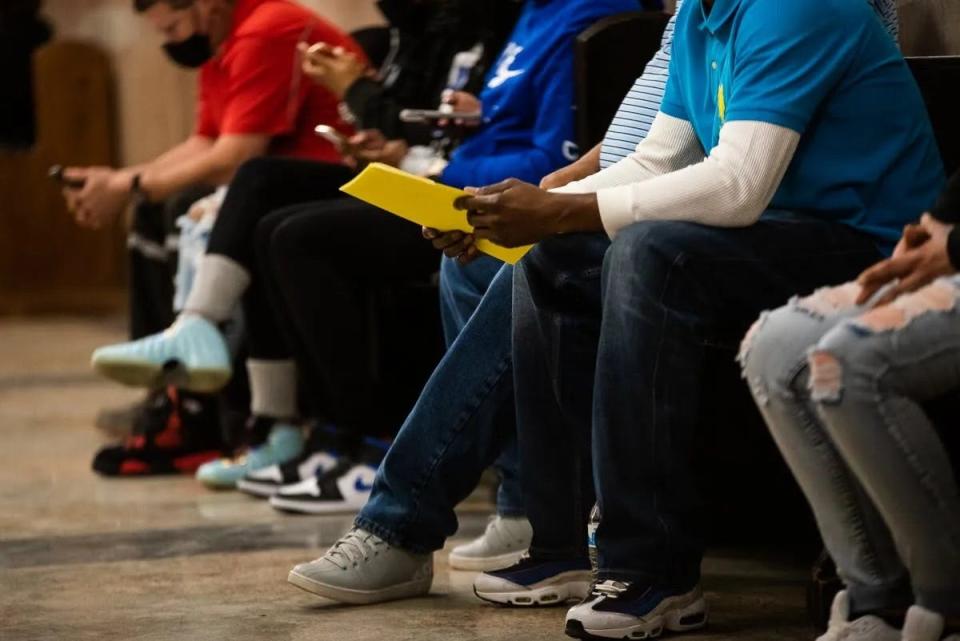A fund to help rehabilitate prisoners has sat empty for 7 years. Lawmakers are finally moving to fund it
When voters approved sweeping criminal justice reforms seven years ago to reduce Oklahoma's prison population, they also created a fund specifically meant to help people get treatment and stay away from prison.
The fund has been empty this whole time. This week, lawmakers finally agreed to put money into it.
Senate Bill 27X transfers $12.5 million to the County Community Safety Investment Fund, which was created "for the sole purpose of providing funds to counties to provide community rehabilitative programming." That programming would have included mental health and substance abuse services, which are inexorably linked with crime and incarceration.
"I feel like this is a fair and good place for us to be able to start," said Senate Appropriations Chair Roger Thompson, R-Okemah. "I really feel great that we have finally been able to put this into a (State Question) 781 lockbox."
More: This vacant fixer-upper could become mental health unit for county jail
For those in the trenches of criminal justice reform, this money is being called a paradigm shift in how Oklahoma handles mental health and substance abuse treatment. Instead of being reactive by locking people up, the state is being more proactive by focusing on treatment and services to make sure Oklahomans are healthy, said Kris Steele, one of the most instrumental figures in the state's criminal justice reform efforts.
"There is a tremendous need to build infrastructure and expand services for mental health care and substance misuse treatment services," said Steele, executive director of TEEM, The Education and Employment Ministry. "I really think that in short order, these investments will be transformational for those communities."

Funding to help rehabilitate Oklahoma prisoners seven years in the making
State Question 780 was meant to reduce Oklahoma's prison population by reducing the number of crimes eligible for a felony conviction. By reducing the prison population, the state began saving money.
Its companion, State Question 781, should have taken that money and reinvested it into community treatment centers, drug courts and other diversion programs. Lawmakers have said there were problems finding out exactly how much money the state saved by not incarcerating so many people.
In 2021, the state Office of Management and Enterprise Services, the Oklahoma Department of Corrections and the Oklahoma Policy Institute came up with a funding formula that calculated the state’s prison population savings, according to a report by Oklahoma Watch.
Oklahoma is between $30 million and $70 million behind in funding, said Damion Shade, executive director of Oklahomans for Criminal Justice Reform.
Broken Trust: How the Oklahoma County jail leadership failed those it sought to protect
"While we're really grateful to see that investment, we know that $12.5 million is basically just a down payment on what Oklahoma voters are owed, and what these communities and counties are owed," Shade said, adding that he hopes legislators try to find more money next year.
Steele noted that even though the state never funded State Question 781, lawmakers have found ways to inject more money into mental health and drug abuse services.
"In a perfect world, we would account for and invest in the savings that have been achieved over the past seven years. But we've got to start somewhere," Steele said.
The funds will be managed by the Oklahoma Department of Mental Health and Substance Abuse Services. Local communities will be able to apply for funding as the money is distributed throughout the state. Shade said he's spoken to community organizations that are already making plans.
How the allotted funds will help those in Oklahoma jails
In Oklahoma County, for example, Shade said the county's drug court is overwhelmed with the number of people who need help avoiding prison time for drug offenses. The court needs to hire another judge and staff to handle the demand.
"One of the first things that should happen with these funds is programs that are working well, that just need more manpower and resources, the funds should start coming into those programs relatively quickly," he said.
Marilyn Davidson, state director for the Right on Crime initiative, said imprisoned Oklahomans don't get the treatment they need and the options outside prison aren't sufficient.
Living Hell: Life inside the Oklahoma County jail, one of the nation's deadliest
"We can't put them in treatment right now because there's not enough to meet the needs in the state of Oklahoma," Davidson said. "I don't think it will ever be enough. But the need in our state is so big and we're seeing it grow."
Shade also cited the importance of funds reaching rural Oklahoma. Legislation adopted this year would let smaller counties band together in ways that will most efficiently provide services to people in rural parts of the state.
As communities pitch pilot programs, the best ideas can be mirrored in other locales or expanded across the state.
"There are counties that are going to figure out programs that move the needle on these persistent social programs," Shade said. "This is the moment we could change the trajectory of the state. We really could have generational sea change in Oklahoma these next few years if we make investments the right way."
This article originally appeared on Oklahoman: Oklahoma lawmakers approve money for prisoner rehabilitation fund

